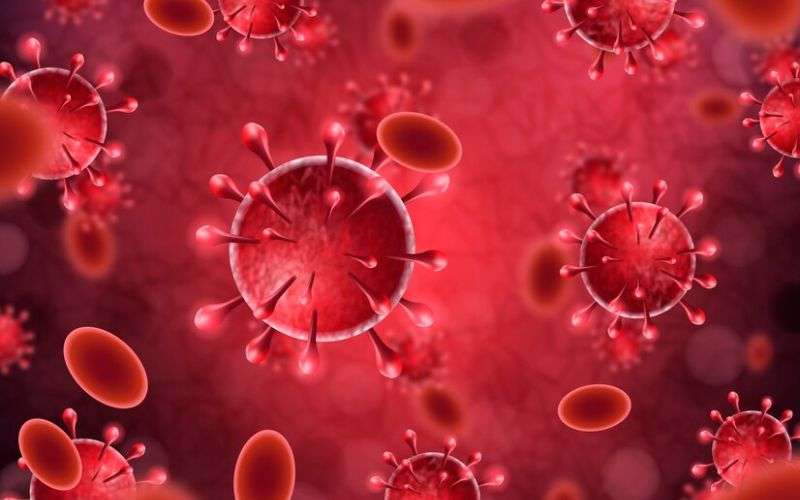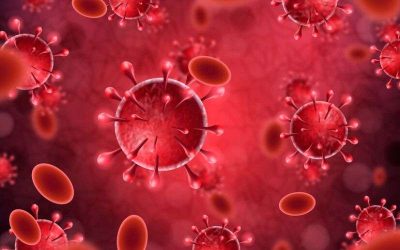Leukemia Treatment Cost in India

Contact Us
Frequently Asked Questions (FAQ) :
The most effective treatment depends on the type and stage of leukemia. Acute leukemias often require chemotherapy, while chronic types may be managed with targeted therapy. Bone marrow transplant is considered curative in eligible cases.
Treatment duration varies by leukemia type and approach. Chemotherapy may last several months, while targeted therapies can be ongoing. Post bone marrow transplant recovery can take 3–6 months or longer.
Yes. India offers internationally accredited hospitals, expert hematologists like Dr. Rahul Bhargava, and advanced technology—making treatment both safe and effective.
Absolutely. Most major hospitals have dedicated international patient services offering visa assistance, airport transfers, translators, and post-treatment follow-up support.
Costs generally include diagnostics, hospital stays, chemotherapy or targeted therapy sessions, transplant procedures (if needed), and follow-up care. Additional costs may include travel, accommodation, and support medication.

Leukemia is a serious form of blood cancer that affects the bone marrow and lymphatic system. It requires timely diagnosis and expert medical attention. Depending on the type and stage of leukemia, treatment can vary—from chemotherapy and targeted therapy to advanced procedures like bone marrow transplants. Fortunately, India offers high-quality care at much more affordable rates compared to Western countries. The average cost of leukemia treatment in India ranges between $5,000 to $30,000 USD, depending on the course of treatment needed.
This comprehensive guide, created for Dr. Rahul Bhargava’s website, outlines treatment options, associated costs, and reasons why India is a popular destination for patients seeking leukemia care.
What Is Leukemia?
Leukemia is a type of cancer that begins in the bone marrow, where blood cells are produced. In this condition, the bone marrow starts making large numbers of abnormal white blood cells. These cells multiply uncontrollably, crowding out the healthy blood cells and impairing the body’s ability to fight infections, carry oxygen, and stop bleeding.
The Four Major Types of Leukemia:
- Acute Lymphoblastic Leukemia (ALL): Commonly found in children but also affects adults. It develops quickly and involves immature white blood cells. Early symptoms include fever, bone pain, fatigue, and frequent infections. Timely chemotherapy can be highly effective.
- Acute Myeloid Leukemia (AML): Affects older adults more frequently. AML grows rapidly and is characterized by the production of abnormal myeloid cells. Symptoms often include fatigue, bleeding, and recurring infections. Intensive chemotherapy is usually required, and bone marrow transplant may be needed.
- Chronic Lymphocytic Leukemia (CLL): Typically progresses slowly and affects older adults. Many patients may not require immediate treatment and are monitored regularly. Treatment is introduced when symptoms begin to appear.
- Chronic Myeloid Leukemia (CML): This form progresses through stages and is caused by a genetic mutation called the Philadelphia chromosome. CML often responds well to targeted drugs like imatinib, allowing many patients to lead long, healthy lives.
Common Symptoms of Leukemia
Symptoms of leukemia can mimic those of more common illnesses, making early diagnosis difficult. Look out for:
- Constant fatigue or weakness
- Frequent infections that don’t improve
- Unexplained weight loss
- Easy bruising or bleeding
- Bone or joint pain
- Swollen lymph nodes or a feeling of fullness due to an enlarged spleen
Other symptoms may include fever, night sweats, or a pale complexion. It’s essential to consult a specialist if symptoms persist.
Diagnostic Tests and Evaluation
To accurately diagnose leukemia, doctors perform a combination of lab tests and imaging procedures. Common diagnostic tools include:
- Complete Blood Count (CBC): Initial test to evaluate abnormal blood cell levels
- Peripheral Blood Smear: Microscopic exam of blood cells
- Bone Marrow Aspiration/Biopsy: Confirms the presence of leukemia cells
- Cytogenetic and Molecular Testing: Helps identify gene mutations or chromosomal abnormalities
- CT or PET Scans: Used to detect lymph node enlargement or organ involvement
These diagnostic procedures in India cost between $300 to $1,000 USD, offering excellent value for quality care.
Leukemia Treatment Options in India
India offers a wide range of treatment options for leukemia that combine modern technology, skilled oncologists, and affordability. The treatment chosen depends on the type of leukemia, the patient’s age and health status, and whether the disease is newly diagnosed or has relapsed. Here’s a breakdown of the most commonly recommended therapies available in India:
1. Chemotherapy
Chemotherapy is often the first line of treatment for leukemia. It uses powerful drugs to target and kill rapidly growing cancer cells. These drugs may be given orally, intravenously, or directly into the spinal fluid, depending on the type of leukemia. Treatment is usually carried out in multiple cycles, and the patient is closely monitored throughout.
Estimated Cost: $3,000 to $10,000 USD, depending on the number of cycles and drug combinations.
2. Targeted Therapy
Targeted therapy is used for specific types of leukemia that involve known genetic mutations, such as the Philadelphia chromosome in CML. These treatments block signals that cancer cells use to grow and divide.
- Common Drugs: Imatinib, Dasatinib, Nilotinib.
- Estimated Cost: $5,000 to $15,000 USD annually. Some patients may need to take these medications long term.
3. Immunotherapy
Immunotherapy uses the patient’s own immune system to fight cancer. It’s commonly used in relapsed or treatment-resistant leukemia cases. Monoclonal antibodies and CAR T-cell therapy are emerging options.
Estimated Cost: $10,000 to $20,000 USD depending on the specific treatment and availability.
4. Bone Marrow Transplant (BMT)
A potentially curative option for many patients, especially in cases where chemotherapy or targeted therapy is not enough.
- Sibling Donor Transplant: $12,000–18,000 USD
- Haploidentical (Half-matched) Donor: $24,000–36,000 USD
- Unrelated Donor Transplant: $45,000–70,000 USD
Other Treatment-Related Expenses
Additional costs that patients and families should plan for include:
- Hospital and ICU stay: $50–150 USD per day
- Medications and supportive care: $500–1,500 USD monthly
- Routine follow-ups and scans: $500–1,000 USD total
- Travel and lodging (for international patients): Varies depending on preferences
Why Choose Dr. Rahul Bhargava?
Dr. Rahul Bhargava is recognized as one of India’s top hematologists and bone marrow transplant specialists. He leads the Hematology and BMT department at Fortis Memorial Research Institute, Gurugram.
Key Credentials:
- Over 1,500 successful bone marrow transplants
- Specializes in leukemia, lymphoma, and myeloma
- Launched India’s first low-cost transplant program
- Trusted by international patients from more than 25 countries
Patients under his care benefit from individualized treatment, a compassionate approach, and cutting-edge medical technology.
What Are the Chances of Recovery?
Leukemia treatment outcomes have improved significantly over the past two decades, thanks to medical advancements, personalized therapy, and early detection. Recovery and survival rates vary depending on the leukemia type, age of the patient, general health, and how early the disease is diagnosed and treated.
- Acute Leukemias (ALL and AML): With prompt diagnosis and aggressive chemotherapy, remission rates range between 60% to 85%. Children generally respond better than adults and may achieve long-term remission.
- Chronic Leukemias (CLL and CML): These types progress more slowly and respond well to targeted treatments like tyrosine kinase inhibitors. Many patients with chronic leukemia live for decades with proper medication and regular follow-ups.
- Bone Marrow Transplant: For patients with high-risk or relapsed leukemia, a bone marrow transplant can offer a potential cure. Success rates are generally high—between 65% to 90%—especially in younger patients with a well-matched donor and no severe comorbidities.
Following treatment, most patients regain their strength gradually. Immune recovery begins within a few months, and many return to their daily activities within 3 to 6 months. Long-term remission is possible with continued monitoring and care. Regular follow-ups, healthy lifestyle choices, and emotional support all play key roles in maintaining wellness after treatment.
India vs. Global Cost Comparison
| Country | Treatment Cost Estimate |
|---|---|
| India | $5,000–30,000 USD |
| USA | $100,000–250,000 USD |
| UK | $70,000–150,000 USD |
| Singapore | $60,000–120,000 USD |
India provides world-class care at a fraction of the cost, making it an ideal option for those seeking quality treatment without financial strain.
Services for International Patients
Patients traveling from abroad are supported every step of the way with:
- Help with medical visas and travel logistics
- Language interpretation services
- Tailored care plans
- Ongoing virtual consultations after returning home
Dr. Bhargava’s team ensures a seamless and comfortable treatment journey.
Final Thoughts
Leukemia treatment doesn’t have to be financially overwhelming. India offers affordable, expert care backed by modern infrastructure and globally respected specialists like Dr. Rahul Bhargava. Whether you’re considering chemotherapy, advanced drugs, or a curative bone marrow transplant, India provides high success rates and full patient support at every stage.
For personalized advice or to start your treatment journey, contact Dr. Rahul Bhargava at Fortis Memorial Research Institute, Gurugram.